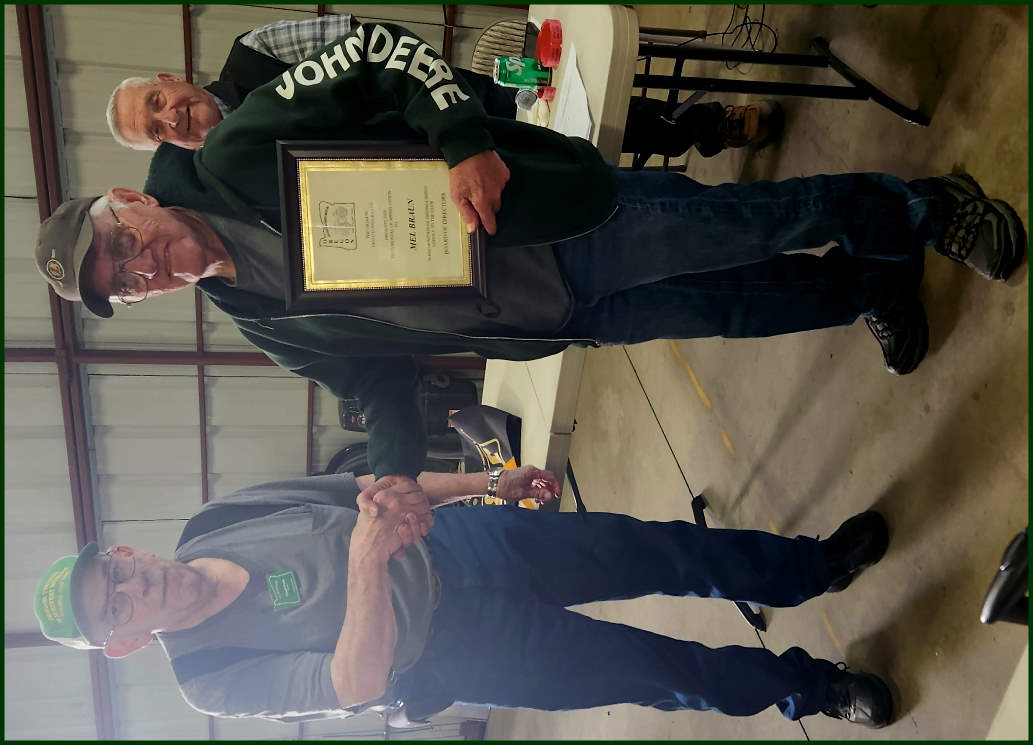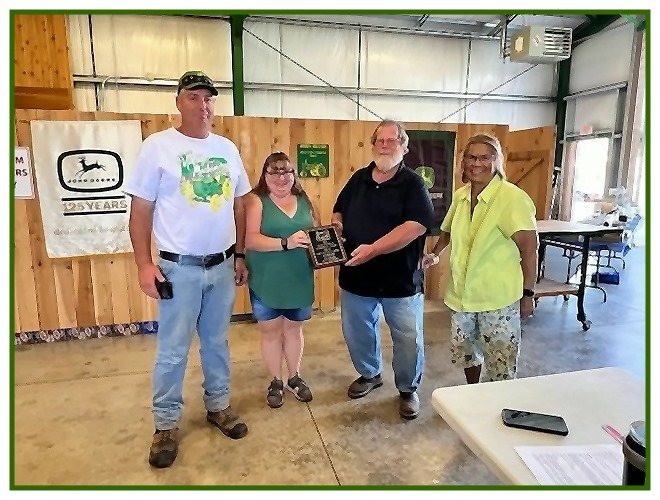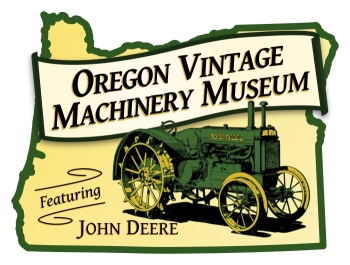|
||||||||||||||||||||||||||||||||||||||||||||||||||||||||||
|
News |
||||||||||||||||||||||||||||||||||||||||||||||||||||||||||
 |
||||||||||||||||||||||||||||||||||||||||||||||||||||||||||
|
We're absolutely bursting with pride and gratitude, and it's all thanks to YOU, our incredible community! We're thrilled to announce that the The Great Oregon Steamup has been crowned "Best Annual Event" in the prestigious Best of the Willamette Valley Awards! Can you hear that steam whistle blowing? That's the sound of collective victory! Every memory made, every laugh shared, every awe-struck moment you experienced with us contributed to this amazing achievement. But the good news doesn't stop there! Powerland Heritage Park also won "Best Place to Volunteer" and we couldn't agree more! To our dedicated volunteers, you are the heart and soul of this park, and this award is a testament to your passion and hard work. Your willingness to lend a hand makes Powerland a truly special place, and we are so proud to share this recognition with you. And as if that wasn't enough, we snagged a Silver Award for "Best Family Attraction" (Enchanted Forest rightfully took the top spot!) This means so much to us because it reflects the joy and wonder we strive to create for families. Every child's wide-eyed gasp at a roaring engine, every family photo by a vintage tractor. Those moments are what we live for, and you helped us earn this honor. To everyone who voted, shared, visited, volunteered, and celebrated with us, this is your award! You are the reason Powerland Heritage Park and the Great Oregon Steam-Up continue to thrive and make history come alive. Thank you for being an indispensable part of our story and for helping us achieve these incredible milestones! Let's keep the legacy rolling! We can't wait to celebrate with you at the next Great Oregon Steam-Up! #BestOfWillametteValley #GreatOregonSteamUp #PowerlandHeritagePark #CommunityLove #ThankYou #VolunteerPower #FamilyFun #WillametteValley #OregonEvents #wedidit |
||||||||||||||||||||||||||||||||||||||||||||||||||||||||||
|
Mel Braun Service Award |
||||||||||||||||||||||||||||||||||||||||||||||||||||||||||
 |
||||||||||||||||||||||||||||||||||||||||||||||||||||||||||
|
Past President and current Board Member Chuck Franz presents an award to Mel Braun (center) for many years of Service on the Board of Directors. |
||||||||||||||||||||||||||||||||||||||||||||||||||||||||||
|
Dave Dunbar Memorial Award |
||||||||||||||||||||||||||||||||||||||||||||||||||||||||||
 |
||||||||||||||||||||||||||||||||||||||||||||||||||||||||||
|
Congratulations to our 2024 Dave Dunbar Memorial Award recipients Logan Fetters and family. Paul and Michelle Duchateau, right, presented the award. |
||||||||||||||||||||||||||||||||||||||||||||||||||||||||||
|
John Deere’s First 100 Years |
||||||||||||||||||||||||||||||||||||||||||||||||||||||||||
 |
||||||||||||||||||||||||||||||||||||||||||||||||||||||||||
|
In 1918, John Deere entered the tractor business. Deere bought the Waterloo Gasoline Engine company and began the manufacture of the Waterloo Boy, selling over 5,600 tractors the first year. The Oregon Vintage Machinery Museum has a 1919 Waterloo Boy tractor displayed in their museum which was donated a couple of years ago. Some work was done on the engine and it is awaiting some parts. As soon as it is put back together, it will be a great feature for this years celebration. In the next 100 years of building tractors, the story is amazing. Hundreds of thousands of tractors were built in it's history. From 2 cylinders to 4 cylinders, to 6 cylinders, unstyled, styled, utility, high crops, crawlers, combines, orchard, industrial, harvestors for many crops, were born. Most tractors offered various types of equipment to use with the model. Tractors were run by kerosene, gas, or diesel. Front ends varied per tractor model, each used for a special purpose. In 1939 some of the Model BO tractors were shipped to Yakima, Washington to the Lindeman Brothers factory to have tracks put on them. They designed 3 types. Standard track; narrow gauge and wide gauge. These all were built with specific jobs in mind. They were great for working hill sides, slopes, in the woods, and more. They are still this day very collectible, as the manufactured numbers are fairly low compared to the wheel tractors. In 1944, John Deere announced it was going to build a factory in Dubuque, Iowa, to manufacture shell casings and later tractors. However, before planning really commenced, the war began winding down. Deere & Company concentrated its efforts on making the Dubuque Works a modern, post-war factory to manufacture engines, repair parts, and a new model of small tractors. They also established a new Industrial Equipment division in 1956, and started keeping separate records for industrial equipment. This worked well till 1980 when changes were on the horizon. With the recession in Northern America, they had to make some major reductions. And with the foreign tractor companies bringing in overseas tractors, they had quite a bit of competition. In 1960 the New Generation tractor was born. They provided the farmers with larger farms, more tractor power and speed and new fuels were combined factors that forced the demise of the classic Deere engine. The first four tractors of this new generation were the 1010, 2010, 3010 and 4010. In 1974 came further development of the 4 wheel drive tractors. And came the 6 cylinder engine to provide the horse power needed to do the job. In the later years, management decided to focus on its strongest and most effective business areas, backhoes, crawlers, engines and purchased products. Customers became the top priority. Management brought in the farmers to see what their needs were and see how they could help them better for the future. This seemed to help the company start growing again. To this day the 2 cylinder tractors and new generation tractors are loved by many. There are clubs for both. There are shows displaying original (unpainted tractors and equipment), to restored tractors and equipment. There are stories that seem to come alive from the older farmers when they talk about the good ol' days. There are few museums that are trying to keep the history of the early John Deere's alive. It is a passion of love for most of us. To continue the story, to teach the younger generation about the beginning of machinery used for farming, logging, help in the war, industrial use, and more. I have just touched lightly about the tractor history, but in my research I have found there wouldn't be enough room in the newsletter to put a lot more great information into it. Plus I really am not an expert on all the facts and figures that a lot of you may want to know more about, so with that I invite you to come to our museum and see just a portion of the information in our library that we do have available to help you with most questions. And talk to the guys who work on these, who know more history about these great tractors, and what they don't know at least they'll try to help you find out where to get the information needed. By Vickey Winn -- 2018 President of Oregon Vintage Machinery Museum Featuring John Deere |
||||||||||||||||||||||||||||||||||||||||||||||||||||||||||
|
||||||||||||||||||||||||||||||||||||||||||||||||||||||||||


